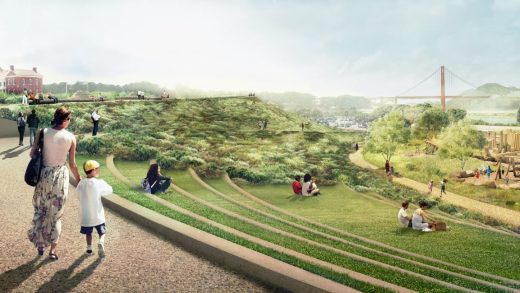America’s most exciting new park hides a hideous highway
Here’s a noncontroversial opinion. Highways, especially those that run through the heart of a city, kind of suck.
After 75 years of use, San Francisco’s Doyle Drive had become seismically unsafe. Connecting the Golden Gate Bridge with the rest of the city, the elevated roadway couldn’t exactly be torn down like other highways around the country (including San Francisco’s former Embarcadero Freeway, which ran along the waterfront). But the city had another idea: What if part of the highway was buried under tunnels, and then parks were built on top of them?
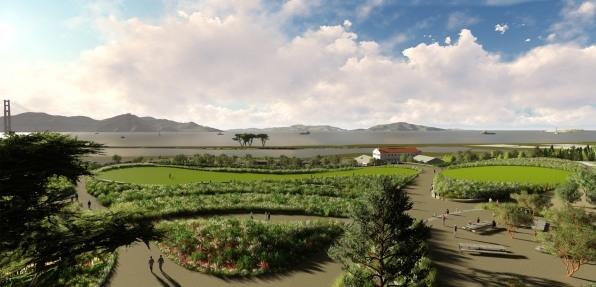
The new Presidio Parkway opened in 2015 with two sets of tunnels, located about a mile from one another. Now, both parks are almost ready. Opening on April 23, the Battery Bluff Park will offer 6 acres of parkland with over 50,000 native plants on top of the first set of tunnels. The project’s real star, however, is the Presidio Tunnel Top—a $118 million park that sits on top of the second set of tunnels and creates a bridge over the highway. When it opens in July, the park will reconnect the Presidio neighborhood to the city’s waterfront, marking it the first time pedestrians can cross over to the other side in almost 100 years.
When a highway runs through a landscape, it divides that landscape in two, making it challenging and sometimes even impossible for pedestrians (and animals) to cross from one side of the highway to the other. This becomes particularly problematic when a highway splits an urban landscape. From Tulsa to Nashville to New Orleans, such highways often plowed through Black and brown neighborhoods, demolishing homes and dividing communities.
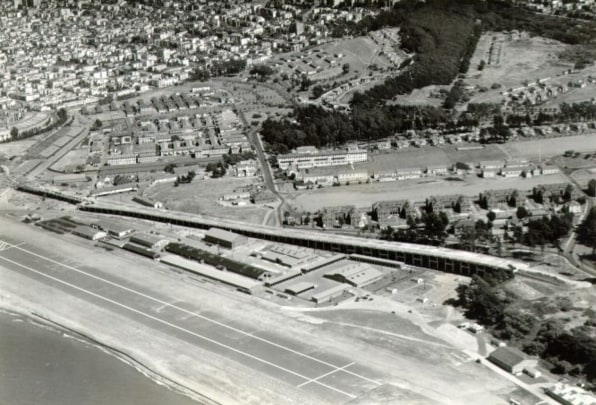
[Photo: San Francisco History Center, San Francisco Public Library/courtesy Presidio Trust]
In San Francisco, the context is a little different. Starting in 1776, and for the next 218 years, the Presidio was used as a military base by the Spanish, Mexican, and U.S. armies. Stretching all the way to the waterfront, where the U.S. Army airfield was located, the whole area was closed to the public, and, from 1937, further isolated by Doyle Drive.
Then, in 1994, the military base was transferred to the National Park Service, and the site became a 1,500-acre park that hugs some of the city’s most affluent neighborhoods like Pacific Heights and Presidio Terrace. (The former airfield now serves as a popular recreation center, known as Crissy Field; the site’s military legacy is also on display at the Battery Bluff Park, where the Presidio Trust restored four historic military batteries that hadn’t been seen by the public since Doyle Drive was built in 1936.)
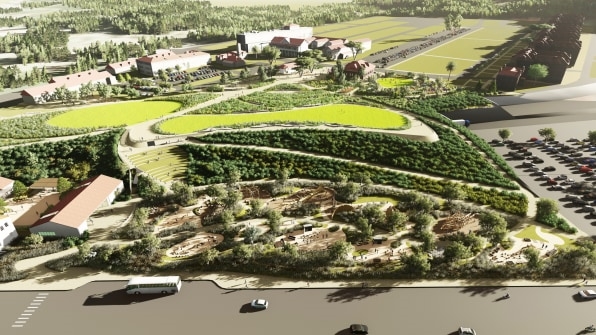
“Historically, Doyle Drive and the highway bifurcated, so they were two different worlds in a way,” says Michael Boland, Chief Park Officer of the Presidio Trust, which managed the transformation along with the Golden Gate National Parks Conservancy and the National Park Service. “The tunnel top is the connector, it’s the hub that connects all the spokes throughout Crissy Field and the Presidio at large.”
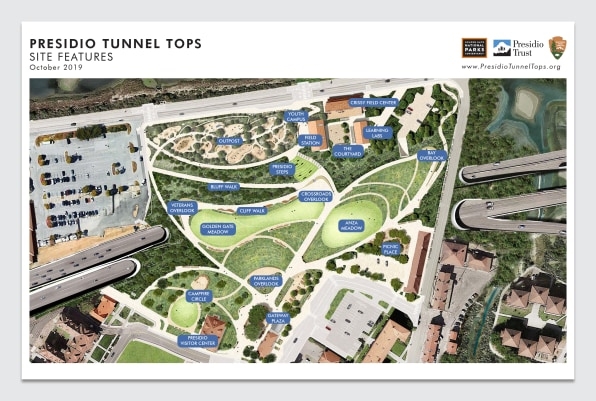
The “connector” was designed by James Corner Field Operations, the renowned landscape design studio behind New York’s High Line and Miami’s Underline. Spanning 14 acres, the Presidio Tunnel Top promises to be a verdant symphony of trails, overlooks, and meadows, all of which spread over the highway tunnels like a green blanket.
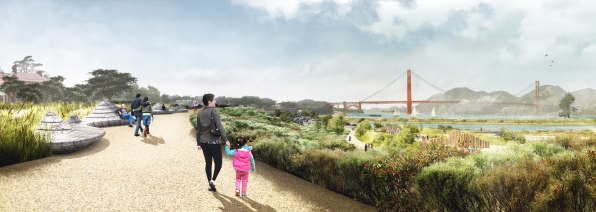
Where once there were none, now there are three ways for pedestrians to get from the Presidio neighborhood to the waterfront. You can follow a winding promenade along the embankment and marvel at sweeping views of the San Francisco Bay and the Marin headlands. Or, you can also go down a series of terraced lawns to sit on. “It is meant to be a large piece of social furniture looking out at the view,” says Richard Kennedy, a senior principal at James Corner Fields Operation. And if neither the promenade nor the steps speak to you, you can follow an ADA-accessible ramp, or a stairway, down to the water—where the designers have created a giant playground, complete with tree trunks, boulders, and rope swings.
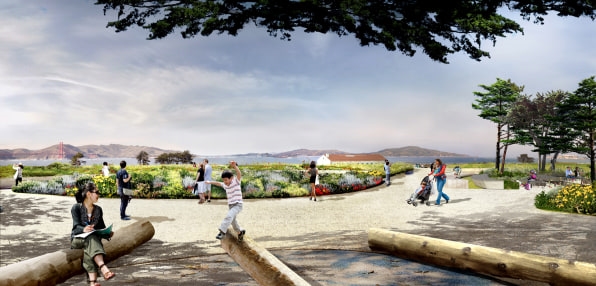
Inevitably, building a park on top of a tunnel required a healthy dose of engineering. Kennedy explains that the tunnels were engineered to support a limited amount of weight. Soil can be quite heavy, so the architects interspersed it with a lightweight foam in strategic places around the park. (A digital model helped them keep track of the overall weight and adjust it accordingly.)
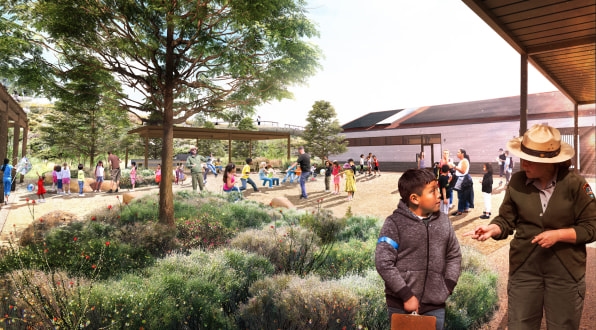
To remedy the noise from the highway below, they designed a set of noise barriers, wrapped them in willow branches to simulate a wooden fence, and built them on the edge of the park. And since building in San Francisco comes with a host of seismic requirements (literally!), they took a page from the way the highway was built to make the park earthquake-proof. Kennedy explains that CalTrans bore a dense network of 40-foot holes into the ground, then filled them with gravel. If the ground shakes, the soil will liquefy and the gravel will hold it together. “It’s one of these invisible innovations that make parks like this possible,” says Kennedy.
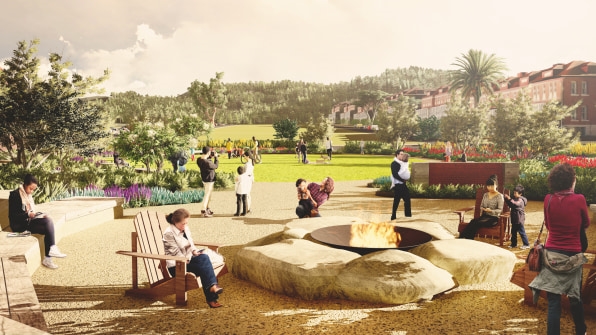
The resulting Presidio Tunnel Top may be one of the most engineered parks ever built, but similar ideas have been used before. In Seattle, the Freeway Park was built in 1976 to reconnect the city’s downtown neighborhoods, which had been divided by I-5. (It’s currently getting a $10 million makeover.) And in Denver, a 57-year-old viaduct is now being replaced with a lower highway, with a 4-acre park nearby.
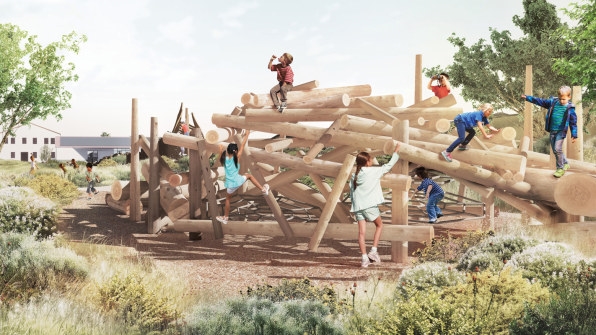
These strategies can help other cities rethink existing highways, but Kennedy says the principle can be applied to future infrastructure, too. “[A highway] shouldn’t be a barrier, it can be a public asset, even an ecological asset,” he says. “This becomes a model for other cities to say, ‘If they can do it, we can do it.’”
Fast Company , Read Full Story
(33)

